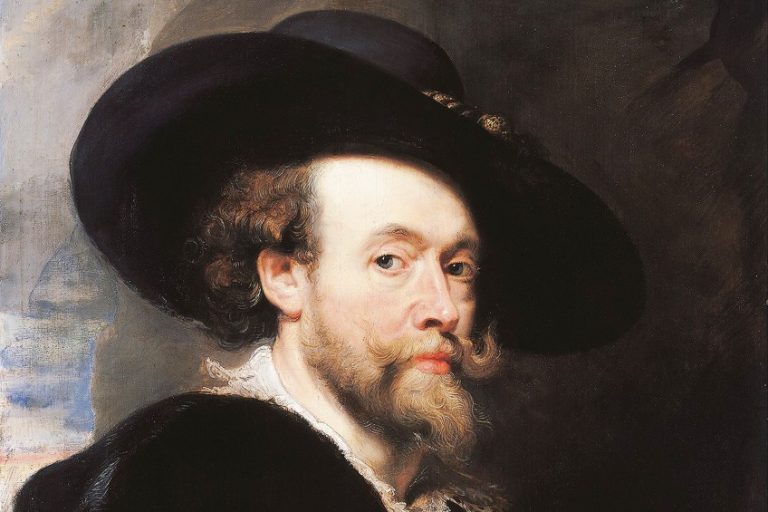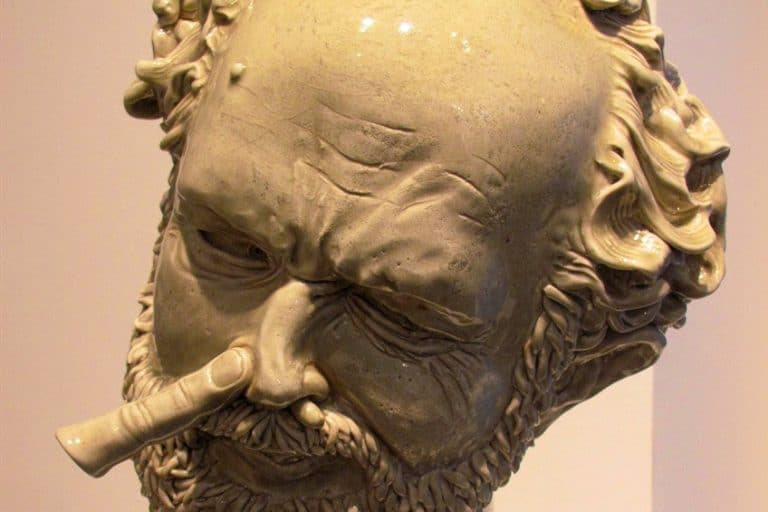Hassan Hajjaj – The Andy Warhol of Marrakech
Hassan Hajjaj, often referred to as the “Andy Warhol of Marrakech,” is a contemporary Moroccan-British artist renowned for his vibrant and eclectic works that seamlessly blend traditional Moroccan culture with modern pop art influences. Born in 1961 in Larache, Morocco, and later moving to London, Hajjaj’s multicultural background profoundly shapes his artistic vision. His work encompasses photography, fashion, and installation, often characterized by vivid colors, bold patterns, and an inventive use of everyday objects. Hajjaj’s distinctive style challenges Western perceptions of Arab identity, celebrating the fusion of diverse cultural elements and capturing the dynamic spirit of contemporary Moroccan life.
Key Takeaways
- Hajjaj blends Moroccan and British cultures in his vibrant art.
- The Kesh Angels series highlights young female bikers in Marrakech.
- His exhibitions are internationally recognized, enhancing his influence.
Early Life and Influences
| Birth | 1961 |
|---|---|
| Death | Present |
| Place of Birth | Larache, Morocco |
| Genre of Work | Photography, Pop art, and Contemporary art |
Hassan Hajjaj, born in Morocco in 1961, has become a notable figure in contemporary art. Based in both London and Marrakech, he has successfully combined elements of both cultures in his unique and vibrant works. Known primarily for his bold portrait photography, Hajjaj’s art reflects the colorful and diverse cultural influences of his homeland. Hajjaj’s artistry extends beyond photography, incorporating aspects of printed fabrics and film.

His iconic series, Kesh Angels, features young female bikers in Marrakech, recontextualized alongside consumer products, challenging perceptions and stereotypes. He captures the essence of street culture with an eclectic mix of traditional Moroccan aesthetics and modern influences. Hajjaj’s works have been exhibited around the globe, with retrospectives such as at the Maison Européenne de la Photographie in Paris and London’s Somerset House.
His innovative style and vibrant use of color have made him an influential figure in the contemporary art world, ensuring his legacy as a bridge between cultures remains impactful.
Origins in Larache
Hassan Hajjaj was born in Larache, Morocco, in 1961. Larache is a coastal city with a mix of Andalusian, Berber, and Arab influences. This cultural diversity was a formative factor in his early life. Growing up in this rich cultural environment gave Hajjaj a deep appreciation for traditional North African aesthetics. It shaped his artistic vision and his use of vibrant colors and patterns in his later work.

Move to London
In the early 1970s, Hajjaj moved to London. This transition marked a significant shift in his life and career. London was a melting pot of cultures, and the burgeoning migrant community in west London provided a new context for his artistic exploration. The influence of British culture and the multicultural environment of London allowed him to merge his North African heritage with Western elements.
This fusion is evident in his unique photographic style, which often features subjects in eclectic, brightly colored settings.
Cultural Fusion
Hajjaj’s work exemplifies a blend of East and West. He draws on the traditional and the contemporary, incorporating elements from his Moroccan heritage and his experiences in the UK. This synthesis creates a dynamic, globalized aesthetic.

His portraits often feature subjects in striking, colorful outfits designed by Hajjaj himself. The backdrops, sometimes adorned with everyday objects, reflect a playful yet profound cultural commentary. This blending of influences makes his art instantly recognizable and influential.
Artistic Style and Themes
Hassan Hajjaj’s work is celebrated for its vibrant interplay of cultural elements, blending traditional Moroccan motifs with contemporary Western influences. His artistic style is multifaceted, encompassing bold portraiture, innovative fashion design, and thoughtful cultural commentary.
Portraiture and Identity
Hajjaj’s portraiture is a vivid exploration of identity. He captures his subjects against eye-catching, sometimes chaotic, backgrounds filled with everyday objects from Moroccan life. These vibrant settings, often constructed with recycled materials, highlight the blending of the old and the new, creating a visual dialogue about cultural identity.

His series, Kesh Angels, showcases young Moroccan women in dynamic, assertive poses, challenging Western perceptions of Arabic society. They are dressed in traditional attire with modern twists, symbolizing the intersection of cultural heritage and contemporary expression.
Fashion and Design
Fashion and design are central to Hajjaj’s art. His use of fashion photography techniques transforms his subjects into bold, stylish icons, reminiscent of pop culture icons like Andy Warhol. The clothing featured in his portraits often includes bright fabrics and traditional Moroccan designs, mixed with modern, global elements. His portraits frequently incorporate fashion items such as branded products and traditional garments. This fusion of high fashion and everyday wear reflects his commentary on consumerism and the global nature of modern style.
The vibrant colors and eclectic patterns create a unique aesthetic that is both playful and provocative.
Cultural Commentary
Hajjaj’s work provides a rich cultural commentary, reflecting on themes such as consumerism, identity, and the cross-cultural exchange between Morocco and the wider world. By juxtaposing elements of high fashion with everyday Moroccan life, he critiques the commodification of culture and highlights the resilience of cultural traditions in a globalized world.

His art questions and redefines stereotypes, encouraging viewers to reconsider their perceptions of Moroccan and Arabic culture. This is particularly evident in how he uses language and imagery from fashion and pop culture to convey deeper messages about societal norms and values.
Notable Works and Exhibitions
Hassan Hajjaj has made significant contributions to the contemporary art scene with his vibrant and eclectic works. From his iconic Kesh Angels series to his global exhibitions, his artistry has captivated audiences worldwide.
Kesh Angels and Other Series
One of Hajjaj’s most recognized works is the Kesh Angels series. This collection of photographs features Moroccan women dressed in traditional and modern attire, riding motorcycles. The juxtaposition of traditional clothing with contemporary props showcases the blending of cultural elements. My Rock Stars is another notable series. This work pays homage to cultural figures and personal heroes, portrayed against striking, patterned backdrops.
Each piece reflects Hajjaj’s stylistic approach, where he merges portrait photography with bold, colorful frames and vibrant textiles.
Global Recognition
Hajjaj’s work has been showcased in numerous prestigious institutions. In 2017, his solo exhibition titled La Caravane was held at Somerset House in London. This exhibition featured a broad selection of his works, demonstrating his unique ability to weave traditional Moroccan aesthetics with contemporary style. His art has also been displayed at the Maison Européenne de la Photographie in Paris.

Additionally, prominent museums such as the Brooklyn Museum, the Los Angeles County Museum of Art, and the British Museum have exhibited his works, further solidifying his global recognition. Hajjaj’s interactive studio and boutique, Andy Wahloo in East London, also serves as a creative hub, offering a space for cultural exchange and artistic expression.
Hajjaj’s exhibitions and installations continue to engage and inspire audiences around the world.
Influence and Legacy
Hassan Hajjaj’s work bridges the gap between Moroccan traditions and global contemporary art, blending cultural identity with modern expressions. His role in promoting Moroccan culture and supporting charitable causes is significant.
Impact on Moroccan and Global Art
Hajjaj’s vibrant photography and artwork celebrate Moroccan heritage while engaging with global themes. By using bold colors and patterns, he evokes traditional Arabic aesthetics and combines them with contemporary pop art influences. His distinctive style has earned him comparisons to Andy Warhol, especially for his ability to integrate everyday elements into his art.
Hajjaj’s work has been exhibited internationally, from London to New York, showcasing the richness of Moroccan culture globally.
Advocacy and Representation
Hajjaj is not just an artist but also a philanthropist. He uses his platform to advocate for the global recognition of Moroccan culture. His artwork often features ordinary people in stylized settings, giving a voice to underrepresented communities.

He promotes unity through his art, stressing the importance of cultural exchange and understanding. By blending elements of community, tradition, and modernity, Hajjaj’s work fosters a deeper appreciation of Moroccan identities and their place in the wider world.
Hassan Hajjaj’s innovative and dynamic artistry has positioned him as a key figure in contemporary art, bridging the gap between East and West through his unique visual language. By infusing his works with vibrant colors, eclectic patterns, and elements of everyday Moroccan life, Hajjaj challenges and redefines cultural stereotypes, offering a fresh perspective on Arab identity. His ability to blend traditional influences with contemporary pop culture resonates globally, making his art both accessible and profoundly impactful. As Hajjaj continues to explore and expand his creative boundaries, his contributions to the art world remain a testament to the power of cultural fusion and artistic innovation.
Frequently Asked Questions
What Are the Distinctive Characteristics of Hassan Hajjaj’s Artistic Style?
Hassan Hajjaj’s photographs are known for their vibrant color palettes and bold patterns. He often incorporates recognizable consumer brands and traditional Moroccan textiles into his compositions. His work has earned him the nickname, Warhol of Marrakech.
How Has Moroccan Culture Influenced Hassan Hajjaj’s Artwork?
Moroccan culture plays a significant role in Hajjaj’s creations. He often uses local fabrics, traditional clothing, and Marrakech street scenes. His work highlights the rich visual culture of Morocco and challenges stereotypes through playful, yet profound imagery.
What Aspects of Hassan Hajjaj’s Personal Background Have Shaped His Creative Work?
Born in Larache, Morocco, and raised in London, Hajjaj’s bicultural experiences profoundly influence his art. He splits his time between Marrakech and London, infusing his work with diverse global perspectives. His self-taught approach and hands-on experience in various creative industries contribute to his unique artistic voice.
Where Can One Purchase Hassan Hajjaj’s Posters or Prints?
Hassan Hajjaj’s posters and prints can be purchased through various outlets. These include art galleries hosting his exhibitions and online platforms specializing in contemporary art. His official website and social media channels often provide updates on available works and purchasing options.
Isabella studied at the University of Cape Town in South Africa and graduated with a Bachelor of Arts majoring in English Literature & Language and Psychology. Throughout her undergraduate years, she took Art History as an additional subject and absolutely loved it. Building on from her art history knowledge that began in high school, art has always been a particular area of fascination for her. From learning about artworks previously unknown to her, or sharpening her existing understanding of specific works, the ability to continue learning within this interesting sphere excites her greatly.
Her focal points of interest in art history encompass profiling specific artists and art movements, as it is these areas where she is able to really dig deep into the rich narrative of the art world. Additionally, she particularly enjoys exploring the different artistic styles of the 20th century, as well as the important impact that female artists have had on the development of art history.
Learn more about Isabella Meyer and the Art in Context Team.
Cite this Article
Isabella, Meyer, “Hassan Hajjaj – The Andy Warhol of Marrakech.” Art in Context. July 19, 2024. URL: https://artincontext.org/hassan-hajjaj/
Meyer, I. (2024, 19 July). Hassan Hajjaj – The Andy Warhol of Marrakech. Art in Context. https://artincontext.org/hassan-hajjaj/
Meyer, Isabella. “Hassan Hajjaj – The Andy Warhol of Marrakech.” Art in Context, July 19, 2024. https://artincontext.org/hassan-hajjaj/.











